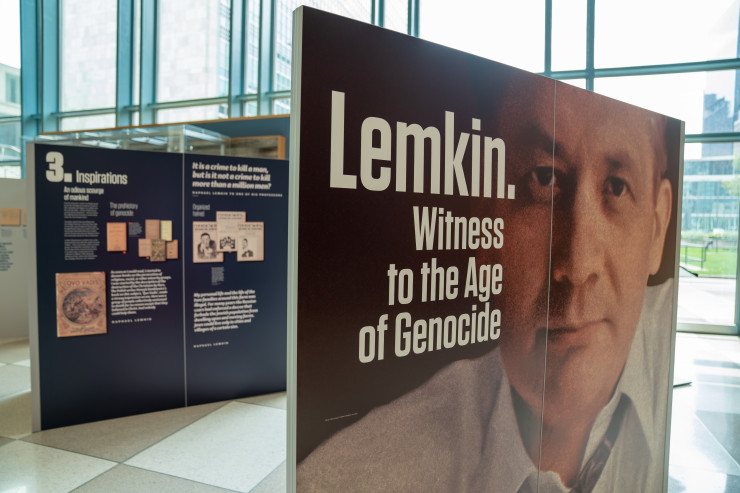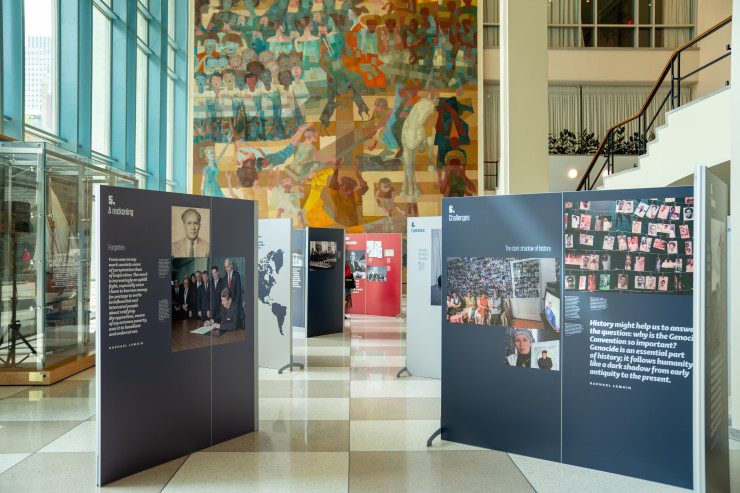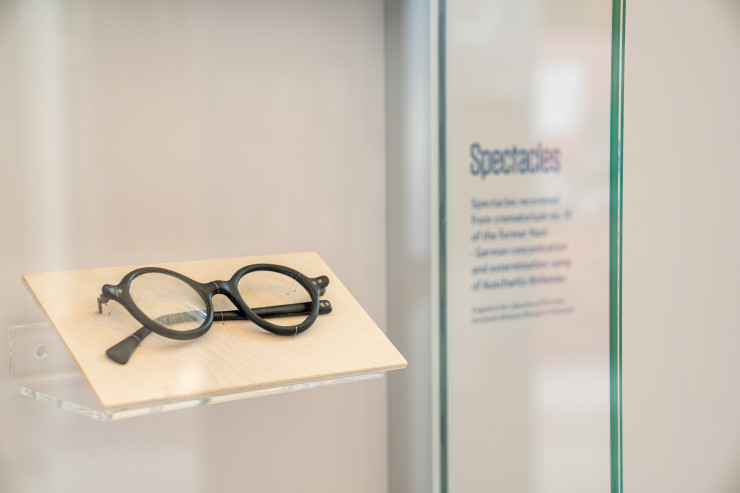The opening of a Polish exhibition about Raphael Lemkin in the UN in New York - Instytut Pileckiego
exhibition
21.08.2019 (Wed) 14:30
The opening of a Polish exhibition about Raphael Lemkin in the UN in New York
On 21 August, an English-language exhibition “Lemkin. Witness to the Age of Genocide” will be opened in the UN headquarters in New York
Tomorrow in the UN headquarters in New York the Pilecki Institute will open an English-language exhibition “Lemkin. Witness to the Age of Genocide”. It is the first exhibition of the Pilecki Institute to be displayed in the US, and at the same time one of many projects devoted to Raphael Lemkin, a Polish lawyer of Jewish origin who coined the term “genocide”.
Today in the UN headquarters in New York the Pilecki Institute opened an English-language exhibition “Lemkin. Witness to the Age of Genocide”. It is the first exhibition of the Pilecki Institute to be displayed in the US, and at the same time one of many projects devoted to Raphael Lemkin, a Polish lawyer of Jewish origin who coined the term “genocide”.

Raphael Lemkin was one of the most important lawyers of the 20th century. It is to his efforts that we owe not only the concept of genocide itself, but also the Convention on the Prevention and Punishment of the Crime of Genocide, which was adopted by the United Nations on 9 December 1948. It was the first international human rights treaty after the Second World War.

The opening of the exhibition in the UN headquarters marks a symbolic return to the place where Lemkin pursued his life’s mission, whose ultimate goal was to condemn the worst of crimes committed by man.
Raphael Lemkin was deeply rooted in pre-war Poland and its intellectual milieu. Inspirations from the Lwów school of law, the tradition of the multi-national and multicultural Polish Republic, the experience of the confrontation with two totalitarian regimes in the 20th century – all these factors substantially contributed to Lemkin’s concept of genocide. It is one of the most significant answers to the great tragedies of the 20th century, one based on law and political philosophy.
The exhibition in the UN headquarters tells more than the life story of an eminent lawyer. First and foremost, it is an opportunity to present – at a forum gathering almost 200 nations of the world – the character of the crime committed in Europe by the two major regimes of the 20th century, among others in the territory of occupied Poland.
Genocide is an ever-present and recurring tragedy of mankind. The phenomenon itself received a name and a legal definition in as late as the 20th century, and the end of the most terrible of world wars failed to put a stop to it. New instances of genocide continue to occur in various parts of the globe.
In the theory and philosophy of law and politics, the problem of genocide remains a fundamental and pressing issue of the human rights law. It is also connected with the question about the nature of community and protected human values, as well as with the right to a peaceful coexistence. This issue, which is a matter of concern for politicians, diplomats, and people of the media and culture, pertains to entire nations all over the world.

See also
- Steve Crawshaw at the Pilecki Institute in Berlin! | Accompanying Event: “Unknown Legacies of the Nuremberg.”
Event
Steve Crawshaw at the Pilecki Institute in Berlin! | Accompanying Event: “Unknown Legacies of the Nuremberg.”
Join us a special event accompanying our two-day international conference “Unknown Legacies of the Nuremberg Trial: Regional Approaches and Perspectives in East Central Europe.”
- Conference: Unknown Legacies of the Nuremberg Trial: Regional Approaches and Perspectives in East Central Europe
conference
Conference: Unknown Legacies of the Nuremberg Trial: Regional Approaches and Perspectives in East Central Europe
We are pleased to invite you to participate in the academic conference "Unknown Legacies of the Nuremberg Trial: Regional Approaches and Perspectives in East Central Europe".
- Film "Soviet Camp 0331"
Event
Film "Soviet Camp 0331"
As part of the program accompanying the opening of the Pilecki Institute headquarters at 82 Sienna Street, we invite you to a screening of a film about the tragic experiences of the inhabitants of the Vilnius region.